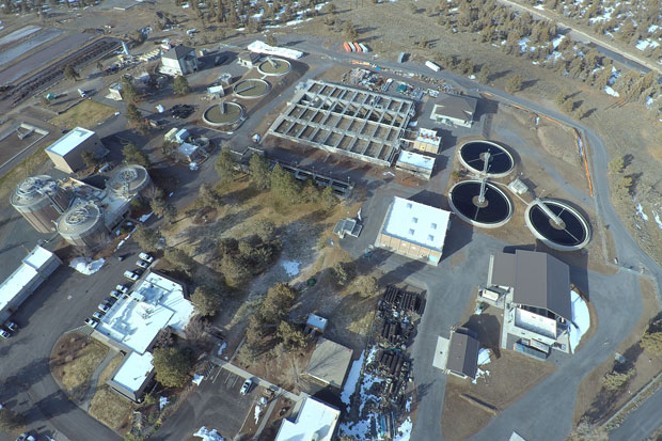Plenty has been said about the transmission of the novel coronavirus via the things that come out of our mouths and noses. Several months into this global pandemic, researchers also know that the virus can also be found in human feces—up to 33 days after a previously infected person has tested negative for the virus, according to researchers at the University of Stirling in the United Kingdom.

In Oregon, Oregon State University teams have been testing sewer systems in Bend, Corvallis and other Oregon towns for the presence of COVID-19—and have found evidence of it. But could the presence of the virus in the local sewer system pose a risk to people?
According to those U.K. researchers, it could.
"It is not yet known whether the virus can be transmitted via the fecal-oral route, however, we know that viral shedding from the digestive system can last longer than shedding from the respiratory tract. Therefore, this could be an important—but as yet unquantified—pathway for increased exposure," wrote Professor Richard Quilliam, an environmental biologist, in a May 6 paper published in the journal, Environment International.
While Quilliam notes that this poses the most risk in places where people defecate in the open, he does see some potential risk at wastewater treatment facilities, too.
"Atmospheric loading of coronaviruses in water droplets from wastewater is poorly understood but could provide a more direct respiratory route for human exposure, particularly at sewage pumping stations, wastewater treatment works and near waterways that are receiving wastewater," the journal article states.
The U.S. Centers for Disease Control and Prevention's current guidelines take a less conservative view.
"Standard practices associated with wastewater treatment plant operations should be sufficient to protect wastewater workers from the virus that causes COVID-19. These standard practices can include engineering and administrative controls, hygiene precautions, specific safe work practices, and personal protective equipment (PPE) normally required when handling untreated wastewater," the CDC's COVID-19 page covering Sanitation & Wastewater Workers states, adding, "No additional COVID-19–specific protections are recommended for workers involved in wastewater management, including those at wastewater treatment facilities."
"We’ve always been safety conscious from a biohazard point of view, so the only difference now is people are wearing safety masks."—Tim Truax
tweet this
At the City of Bend's Water Reclamation Facility, Water Reclamation Facility Manager Tim Truax said it's been a topic of much conversation among the members of the water works association to which he belongs.
"The research that has been published by the American Water Works Association would lead you to believe that transmission through the water route is insignificant," he told the Source. "So from a health and safety point of view, we're making sure people are protected with appropriate PPE. We've always been safety conscious from a biohazard point of view, so the only difference now is people are wearing safety masks."
Bend's wastewater goes through a three-step treatment process to remove solid waste and disinfect it—including a new ultraviolet disinfection process that the facility implemented in 2019, Truax said. The UV system is now used to disinfect the water, in lieu of gaseous chlorine, which Truax said posed more hazards and was harder to work with. While his team is still working out some kinks, he said the goal is to produce Class A water, the highest-quality water, that can be re-used in a number of capacities.
As Truax described, "Many places back east, the drinking water for one community might be the former wastewater in another community."
The City's facility, located near Powell Butte, sells some Class A water to nearby Pronghorn Resort for its golf course—but the vast majority of the City's treated water goes into percolation and evaporation ponds, where it evaporates into the air or seeps into the ground.
But in an age when farmers getting water from the North Unit Irrigation District near Madras continue to get less irrigation water than others with more senior water rights, there could be another use for that treated, Class A water, Truax suggested: Putting it into a canal for farmers up north.
"Our facility is near North Unit," he said. "We could get a credit to the City for canal water flows. Right now, the City is in good shape, but if there's an effort to increase in-stream flows and reduce the amount of water that's diverted from the Deschutes (River), there certainly can be conversations."
























